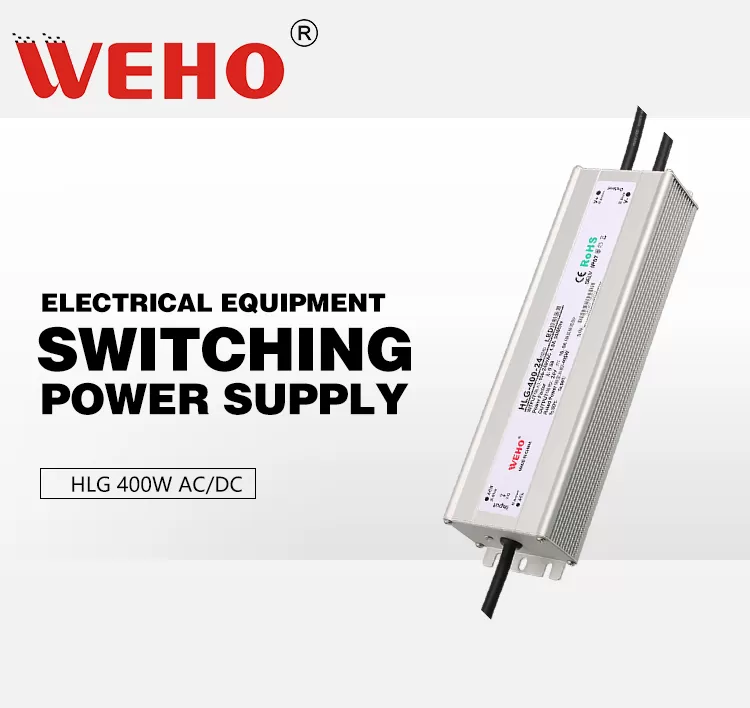Switch mode power supplies (SMPS) have become ubiquitous in modern electronics, powering everything from personal computers and mobile phone chargers to industrial machinery and medical equipment. Their popularity stems from their high efficiency, compact size, and light weight compared to traditional linear power supplies. If you’re in the market for a power supply, understanding the fundamentals of SMPS operation can be invaluable in making an informed decision. This article delves into the inner workings of SMPS, exploring their core principles, key components, common topologies, and the advantages they offer.

What is a Switch Mode Power Supply?
A switch mode power supply is a type of power supply that utilizes semiconductor switching techniques, rather than standard linear methods, to convert electrical power efficiently. Unlike linear power supplies that dissipate excess power as heat, SMPS rapidly switch a transistor between its “on” and “off” states, minimizing energy wastage. This switching action, typically occurring at high frequencies, allows for the use of smaller, lighter transformers and filtering components, resulting in a more compact and efficient power supply unit.
Core Principles of Operation
The basic principle behind an SMPS is the rapid switching of a power transistor. This creates a high-frequency pulsating current, which is then passed through a transformer to change the voltage. This AC output is then rectified and filtered to produce a stable DC output. Here’s a simplified breakdown:
Input Rectification and Filtering: The AC input voltage is first converted to DC using a rectifier. A filter capacitor smooths out the pulsating DC to reduce ripple.
High-Frequency Switching: A power transistor (typically a MOSFET) acts as a high-speed switch, controlled by a pulse-width modulation (PWM) circuit. It turns the DC on and off rapidly, creating a high-frequency square wave.
Voltage Transformation: This high-frequency AC is fed into a transformer. The transformer steps the voltage up or down based on its turns ratio. Because the frequency is high, the transformer can be significantly smaller and lighter than those used in linear supplies.
Output Rectification and Filtering: The output from the transformer is rectified back to DC and filtered again to further reduce ripple and noise, producing a clean and stable DC output voltage.
Feedback and Control: A feedback loop monitors the output voltage and adjusts the PWM signal controlling the switching transistor. This ensures the output voltage remains constant despite variations in input voltage or load.
Key Components of an SMPS
Understanding the role of each component is crucial for buyers to evaluate the quality and performance of an SMPS:
Switching Transistor: The heart of the SMPS, typically a MOSFET or IGBT, responsible for rapidly switching the current. Key parameters include switching speed, on-state resistance, and breakdown voltage.
Transformer: Steps up or down the voltage. High-frequency operation allows for smaller, lighter designs. The quality of the core material and windings impacts efficiency and power handling.
Output Rectifier: Converts the high-frequency AC from the transformer back to DC. Schottky diodes are often used for their low forward voltage drop and fast recovery times.
Filter Capacitors and Inductors: Smooth out the DC voltage, reducing ripple and noise. Electrolytic capacitors and inductors are common choices, with their values and characteristics influencing output quality.
Control Circuit (PWM Controller): Generates the PWM signal to control the switching transistor. It monitors the output voltage and adjusts the duty cycle to maintain a stable output. Sophisticated controllers offer features like overvoltage protection, overcurrent protection, and soft start.
Common SMPS Topologies
Several different SMPS topologies are used, each with its own advantages and disadvantages:
Flyback: Simple and cost-effective, suitable for lower power applications. Uses a single transistor and a coupled inductor (often referred to as a “flyback transformer”).
Forward: More efficient than flyback for higher power applications. Also uses a single transistor but with a separate transformer and inductor.
Push-Pull: Uses two transistors and a center-tapped transformer. Suitable for higher power levels and offers good efficiency.
Half-Bridge: Uses two transistors and two capacitors. Offers good efficiency and power handling capabilities.
Full-Bridge: Uses four transistors and provides the highest power and efficiency among common topologies. Often used in high-power applications.
Advantages of Switch Mode Power Supplies
Buyers should consider the following key advantages of SMPS:
High Efficiency: Typically 80-95% efficient, significantly higher than linear power supplies, resulting in lower energy consumption and reduced heat generation.
Compact Size and Light Weight: The use of high-frequency transformers and smaller filtering components allows for much smaller and lighter designs.
Wide Input Voltage Range: Many SMPS can operate over a wide range of input voltages, making them suitable for international use.
Cost-Effective (at higher power): While potentially more complex, SMPS can be more cost-effective, particularly at higher power levels, due to smaller component sizes and reduced cooling requirements.
Design Flexibility: Available in various topologies and power ratings to suit a wide range of applications.
Considerations for Buyers
When choosing an SMPS, buyers should consider factors such as:
Power Requirements: Determine the required output voltage and current for your application.
Efficiency: Higher efficiency means lower operating costs and less heat generation.
Input Voltage Range: Ensure the SMPS can operate within your expected input voltage range.
Size and Weight: Consider the physical constraints of your application.
Safety and Regulatory Compliance: Look for certifications like UL, CE, and EMC to ensure safety and compliance.
Reliability and Lifetime: Consider the manufacturer’s reputation and the expected lifespan of the power supply.
Cost: Balance performance and features with your budget.
Electromagnetic Interference (EMI): Due to their switching nature, SMPS can generate EMI. Look for power supplies with good EMI filtering if your application is sensitive to interference.

Conclusion
Switch mode power supplies have revolutionized the way we power our devices. Their high efficiency, compact size, and versatility make them the preferred choice in a wide range of applications. Understanding their fundamental principles, key components, and various topologies can empower buyers to make informed decisions and select the optimal SMPS for their specific needs. As technology continues to evolve, we can expect even further advancements in SMPS design, leading to even more efficient, compact, and feature-rich power solutions.








